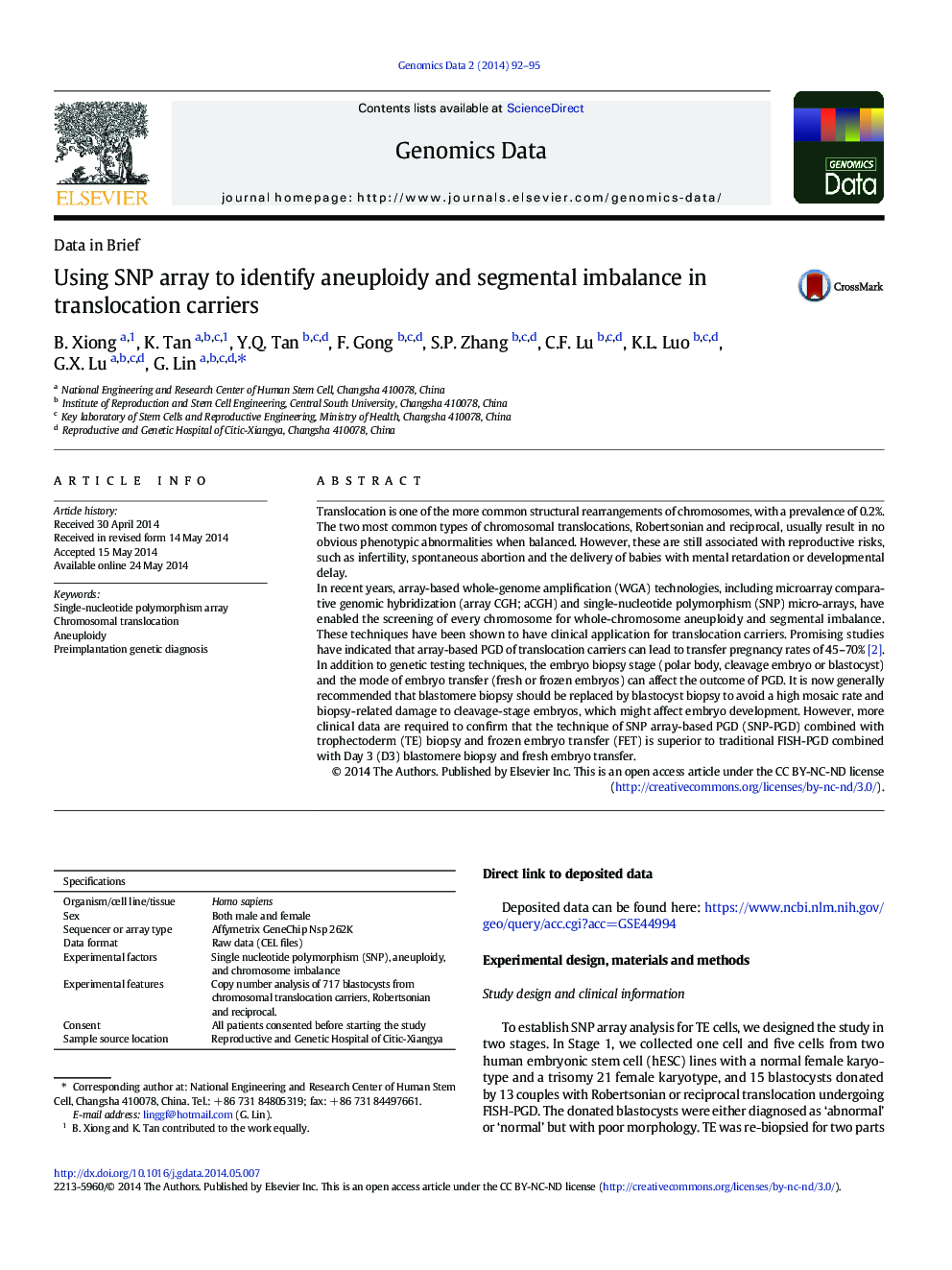| Article ID | Journal | Published Year | Pages | File Type |
|---|---|---|---|---|
| 2822236 | Genomics Data | 2014 | 4 Pages |
Translocation is one of the more common structural rearrangements of chromosomes, with a prevalence of 0.2%. The two most common types of chromosomal translocations, Robertsonian and reciprocal, usually result in no obvious phenotypic abnormalities when balanced. However, these are still associated with reproductive risks, such as infertility, spontaneous abortion and the delivery of babies with mental retardation or developmental delay.In recent years, array-based whole-genome amplification (WGA) technologies, including microarray comparative genomic hybridization (array CGH; aCGH) and single-nucleotide polymorphism (SNP) micro-arrays, have enabled the screening of every chromosome for whole-chromosome aneuploidy and segmental imbalance. These techniques have been shown to have clinical application for translocation carriers. Promising studies have indicated that array-based PGD of translocation carriers can lead to transfer pregnancy rates of 45–70% [2].In addition to genetic testing techniques, the embryo biopsy stage (polar body, cleavage embryo or blastocyst) and the mode of embryo transfer (fresh or frozen embryos) can affect the outcome of PGD. It is now generally recommended that blastomere biopsy should be replaced by blastocyst biopsy to avoid a high mosaic rate and biopsy-related damage to cleavage-stage embryos, which might affect embryo development. However, more clinical data are required to confirm that the technique of SNP array-based PGD (SNP-PGD) combined with trophectoderm (TE) biopsy and frozen embryo transfer (FET) is superior to traditional FISH-PGD combined with Day 3 (D3) blastomere biopsy and fresh embryo transfer.
